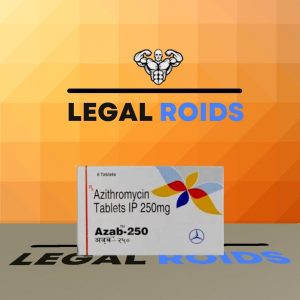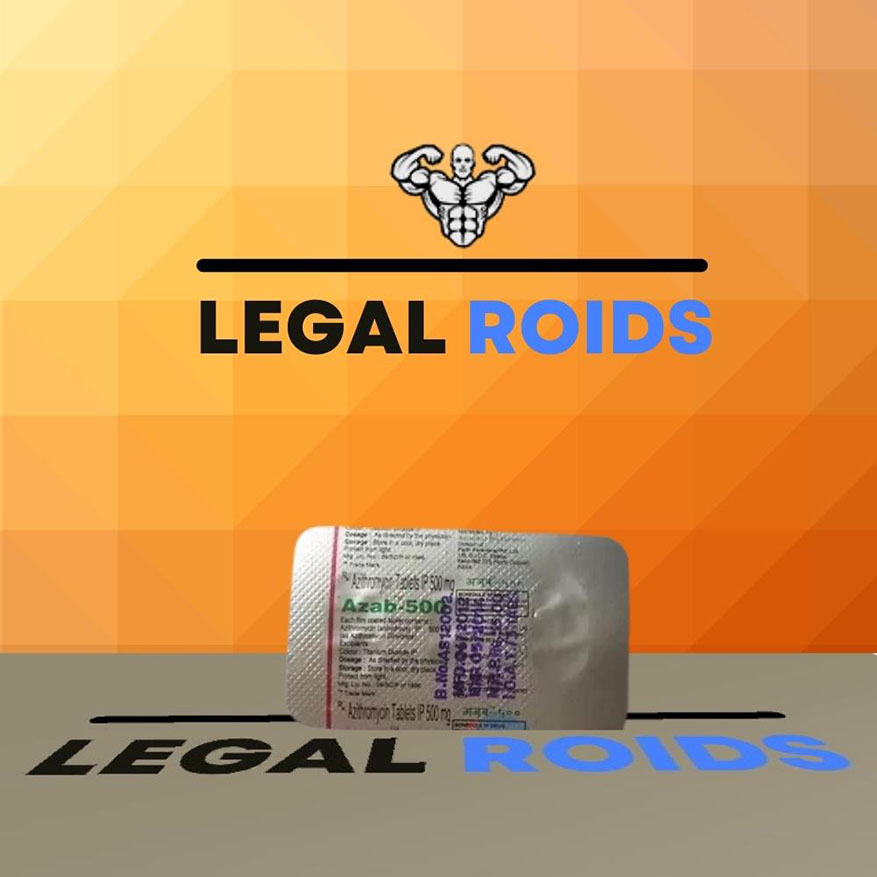Nessun prodotto nel carrello.
Principali motivi per acquistare azitromicina e altri steroidi da noi
Miglior prezzo su prodotti di altissima qualità
Trasporto veloce negli Stati Uniti e in tutto il mondo
Un rispedizione se la consegna gratuita viene arrestato
Centinaia di clienti soddisfatti fedeli
Altri prodotti di questa sostanza
aggiunto del prodotto! Sfoglia Wishlist
Il prodotto è già nella lista dei desideri! Sfoglia Wishlist
azitromicina
Azitromicina per Parth
[ 100mg (3 pillole) ] $5.50
[ 100mg (3 pillole) ] $5.50
aggiunto del prodotto! Sfoglia Wishlist
Il prodotto è già nella lista dei desideri! Sfoglia Wishlist
azitromicina
Azitromicina per Parth
[ 250mg 6 pillole ] $7.70
[ 250mg 6 pillole ] $7.70
aggiunto del prodotto! Sfoglia Wishlist
Il prodotto è già nella lista dei desideri! Sfoglia Wishlist
azitromicina
Azitromicina per Parth
[ 500mg 3 pillole ] $7.70
[ 500mg 3 pillole ] $7.70
aggiunto del prodotto! Sfoglia Wishlist
Il prodotto è già nella lista dei desideri! Sfoglia Wishlist
punizione 500
$7.70
fabbricante: Dominio
Categoria: steroidi per via orale
Sostanza: azitromicina
Pacchetto: 500mg 3 pillole
SKU: 678 categorie: azitromicina, steroidi per via orale
Macrolides (eritromicina, clarithromycin and azithromycin) derive their name from the macrocyclic lactone ring with which at least one deoxysaccharide is bound. Clarithromycin differs from erythromycin by a methyl group substituting hydrogen for the hydroxyl group at position 6, and in azithromycin, the lactone ring contains an additional nitrogen atom with a methyl group attached to it. Due to these structural differences, azithromycin and clarithromycin are more stable in an acidic environment, better penetrate into tissues and have a broader spectrum of action
Mechanism of action
Macrolides are bacteriostatic antibiotics that suppress protein synthesis by reversible binding to the 505 subunit of ribosomes. Macrolides act on the same target as chloramphenicol, competitively inhibiting its binding to ribosomes. The change in the 50S subunit of the ribosomes due to a mutation, which disrupts the binding of macrolides aminoacidi e l'esercizio fisico to the target, leads to the development of drug resistance. In contrast to chloramphenicol, which prevents the formation of a peptide bond, macrolides act at the stage of translocation – the transfer of the newly synthesized peptidyl-tRNA molecule and the aminoacyl segment of the ribosome to the peptidyl region.
Gram-positive bacteria accumulate almost 100 times more erythromycin than gram-negative bacteria.
In the alkaline medium, the antimicrobial activity of the preparation is much higher, probably because in a non-ionized form that predominates at high pH, it penetrates to bacterial cells much better.
Acquired resistance to macrolides is due to three main mechanisms:
- active excretion of the drug from the cell (in staphylococci the carrier is encoded by the gene mrsA, in the Streptococcus pyogenes gene mefA, in Streptococcus pneumoniae – the mefE gene)
- a decrease in the affinity of the ribosomes to the drug due to their methylation under the action of an induced or constitutive methyltransferase enzyme (this enzyme is encoded by the genes ermin, erbB and ermin)
- hydrolysis of macrolides by esterases of enterobacteria (Barth61dmy et al., 1984).
Application of azithromycin
Depending on the pathogen and the severity of the infection, the dose of erythromycin for oral administration in adults is usually 1-2 g / day in several doses (usually the drug is taken every 6 h). Even at a dose of 8 g / day inside for 3 mesi, erythromycin is well tolerated. If possible, erythromycin and erythromycin stearate should not be taken immediately before meals and immediately after it (this does not apply to erythromycin estolate and erythromycin ethyl succinate).
In children, the daily intake for oral administration is 30-50 mg / kg in 4 divided doses; with severe infections it can be doubled. Intramuscular injection is not recommended, since injections are painful. Preparations for intravenous administration (erythromycin glucoheptonate or erythromycin lactobionate) are used in severe infections, such as Legionnaires’ disease. The usual dose is 0.5-1 g IV every 6 ore. In the treatment of erythromycin with glucoheptonate at a dose of 1 g IV every 6 ore per 4 settimane, no significant side effects were observed, with the exception of thrombophlebitis at the venipuncture site.
| Marca | |
|---|---|
| Pacchetto | |
| Sostanza |
Hai ancora domande sull'azitromicina?
Inviaci un messaggio e noi risponderemo alle vostre domande!
Altri prodotti di questa marca
aggiunto del prodotto! Sfoglia Wishlist
Il prodotto è già nella lista dei desideri! Sfoglia Wishlist
azitromicina
Azitromicina per Parth
[ 100mg (3 pillole) ] $5.50
[ 100mg (3 pillole) ] $5.50
aggiunto del prodotto! Sfoglia Wishlist
Il prodotto è già nella lista dei desideri! Sfoglia Wishlist
azitromicina
Azitromicina per Parth
[ 250mg 6 pillole ] $7.70
[ 250mg 6 pillole ] $7.70
aggiunto del prodotto! Sfoglia Wishlist
Il prodotto è già nella lista dei desideri! Sfoglia Wishlist
azitromicina
Azitromicina per Parth
[ 500mg 3 pillole ] $7.70
[ 500mg 3 pillole ] $7.70






